82 F. high in St. Cloud Wednesday.
82 F. average high on July 29.
82 F. high temperature on July 29, 2014. (quick, buy a Lotto ticket. Use the number "82". Trust me, I'm a weatherman...)
July 30, 1971: Cool spell across Minnesota with frost in north and freezing temperatures reported as far south as Pipestone.
Mercifully QuietBoredom
is a rare and fleeting experience for Minnesota meteorologists. Most
days I'm being swatted on the head and kicked in the butt by Mother
Nature, so I'm just fine with a stretch of boringly beautiful weather.
Especially
since we've picked up 7.32 inches of rain in July; 7th wettest on
record. On average we experience 6 days a year with an inch or more of
rain in the metro. So far we've picked up 3 days over an inch, all of
them in July. St. Cloud has seen 9 separate days of 1-inch-plus rains
since mid-May! No drought concerns this year.
And there's growing
evidence we're heading into a "Super El Nino"; a dramatic warming of
Pacific Ocean water forecast to spill over into spring of 2016. Dr. Jeff
Masters at Weather Underground predicts it may be one of the 3 biggest
El Nino's in the last 60 years, rivaling 1972, 1982 and 1997.
Who cares?
Strong El Nino events often result in milder, drier winters for
Minnesota. Place your bets.
What's not to like about this week: 80s, a comfortable dew point in the 50s, little chance of thunder until late
Sunday, when the next cool front dribbles out of Canada. The worst of the jungle-like heat and T-storms stays south of Minnesota.
Staggering Damage.
Thanks to AerisWeather meteorologist Todd Nelson, vacationing up at
Craguns Resort on Gull Lake with his family. He sent me these photos on
Wednesday, and said "All I can hear is distant chainsaws...huge piles of
lumber everywhere!"
Evidence of Microburst Winds at Maddens Resort.
State Representative Mark Anderson and his wife Barbara took me out on
Gull Lake Sunday to get a first-hand look at the damage in the Brainerd
Lakes area. This is the employee housing at Maddens, missing much of the
roof, evidence of severe wind damage everywhere. This is in line with
Duluth NWS wind estimates of 100 mph in a series of downbursts. Much
like a tornado the damage swaths were fickle and spotty, many areas
spared, but other pockets of extreme damage, trees snapped like
toothpicks. The damage path was linear, no evidence of rotation found in
tornadic winds.
Awe-Inspiring.
This is one of the photos I shared with the GCOLA, the Gull Chain of
Lakes Association Gala event Monday evening up at the Grand View Lodge
(which also suffered tree damage, but nothing like the southern end of
Gull Lake). I snapped this panorama on my trusty iPhone about 4 miles
east of Schaefer's grocery store in Nisswa, just north of Co. 13. It
looked like the fist of God came crashing down, snapping trees in a
swath maybe half a mile wide, again, consistent with
severe downburst or microburst winds.
Poleward Shift in Derecho/Downburst Winds with Warming Climate?
In response to a reader's question about frequency of these kinds of
damaging, freakish wind storms I asked state climatologist Greg Spoden
about trends he's witnessed. Are we imagining an increase, or does the
data confirm an increase in these derecho/downburst wind events? Here is
what Greg wrote:
"
The National Weather Service Storm Prediction Center offers an excellent overview of derechos and derecho climatology here.
In their section on derechos and climate change they reinforce Paul's
comment about a poleward shift in the corridors of maximum derecho
frequency." - Greg Spoden, State Climatologist
An Unusually Soggy July. AerisWeather meteorologist D.J. Kayser has an
interesting blog post focused on the number of days with 1" or more of rain, compared to long-term averages; here's an excerpt: "...
As
you may have noticed above, both St. Cloud and the Twin Cities saw rain
totals of over an inch this morning. So, we break out the 1″+ rain
tracker once again today! The Twin Cities is now up to three days this
year, all occurring during the month of July, with at least one inch of
rain – half way toward the yearly average of six. St. Cloud has now seen
nine days this year with at least one inch of rain, one away from
matching the number seen during 2014. This also marks the fourth one
inch or greater rain this month in St. Cloud..."
More October than July.
Check out the stormy swirl pushing from Manitoba into Ontario, low
stratus clouds extending into central Minnesota. This type of full
latitude storm, deriving strength from strong north-south temperature
gradients, would look right at home in late September or October. But
late July? A bit odd. This is the low pressure system that whipped up 60
mph+ winds over Montana and North Dakota Tuesday. Satellite loop:
WeatherTap.
10% Probability of Tropical Storm Formation. The odds are still quite low, but
NOAA NHC
is keeping an eye on an area of disturbed weather hovering near
Florida, responsible for flooding rains. The atmosphere is still sheared
(strong winds aloft, possibly whipped up by a strengthening El Nino
event) so the odds of a named storm are small, but not zero.
Puddles Are The Exception, Not The Rule.
The best chance of showers and T-storms will set up from Iowa into
Wisconsin and the Chicago area this upcoming weekend; we may be brushed
by thunder, especially southern Minnesota. The heaviest rains (8-10")
over the next 7 days will fall over Florida in response to a temporarily
stalled tropical wave.
Welcome Canadian Exhaust.
For 6 months out of the year meteorologists mutter about "Canadian Cold
Fronts", like some sort of weather-related obscenity. This time of year
a cool frontal passage is a welcome event, and northern tier states
will get to enjoy a dip in temperature and humidity in the coming days.
Stunted Heat Wave.
Long range models continue to keep the epicenter of heat and humidity
(and 100 degree plus heat indices) just south of Minnesota and Wisconsin
over the next 2 weeks; a series of Canadian cool fronts taking the edge
of the dog days close to home. That said, much of America will suffer
through prolonged heat, from San Diego and Denver to Dallas and Atlanta,
where 100 degree heat indices will be the rule. Source:
GrADS:COLA/IGES.
3-Hour Canadian Tornado Likely One Of The World's Longest.
I still have trouble believing that this was ONE TORNADO, rather than a
series of tornadoes spinning up under the same parent supercell. Then
again these days I wouldn't rule anything out. Here's a clip from
USA TODAY:
"he massive tornado that roared across the Canadian province of
Manitoba late Monday was on the ground for nearly 3 hours — likely one
of the longest-lasting on record in Canada and perhaps the world. No
injuries or deaths were reported. The longest tornado recorded is the
infamous Tri-State tornado that lasted for about 3.5 hours, ravaging the
Midwest in March 1925 and leaving hundreds of people dead in its
wake..."
Frame grab credit above: "
A screen grab of Monday's tornado in Manitoba, which was on the ground for nearly 3 hours." (Photo: TVNWeather.com).
"One Of The Top 3 El Nino Events Of The Last 60 Years?" That headline comes from Dr. Jeff Masters at Weather Underground, who has an
excellent update
on what may be a memorable warm phase for the Pacific, and a possible
dent in the epic drought gripping California and much of the west.
Here's an excerpt: "
We’re now well into the ramp-up phase of what
promises to be one of the top three El Niño events of the last 60-plus
years. Sea-surface temperatures (SSTs) in the Niño3.4 region--an
area straddling the eastern tropical Pacific--are the most widely
accepted index for the oceanic evolution of El Niño. NOAA announced in
its weekly ENSO update on Monday (see PDF)
that Niño3.4 SSTs were running 1.6°C degrees above the seasonal average
for the week ending Monday. While this is down slightly from a peak of
1.7°C the week before, Michelle L’Heureux reminds us in NOAA’s ENSO Blog that minor weekly variations aren’t worth getting too worked up about..."
Image credit above: "
Sea
surface temperatures for the week ending July 22 were more than 1°C
above average from the eastern tropical Pacific northward through much
of the northeast Pacific, with pockets of 2 - 4°C above average evident
near the equator. Image credit: NOAA National Centers for Environmental Information."
Weather El Nino's Financial Storm.
What will a rapidly warming Pacific mean for Minnesota and the rest of
the USA? If the past is any guide more storms from California into the
southern USA, and a mild bias into much of the winter from the Pacific
Northwest and western Canada into the Upper Midwest. In theory - but
every El Nino is different. Here's an excerpt from
Yahoo News: "...
The
latest El Niño is slated by some observers to rival the one in 1997–98
as the biggest ever — one that killed an estimated 2,100 globally with a
force roughly equivalent to 1 million Hiroshima bombs. It left $33
billion in property damages in its wake. “This could be a big one,”
warns a recent report from Brown Brothers Harriman, a financial firm.But
predicting exactly what the weather will be is obviously tricky, and El Niño’s impact on the markets is usually quite specific..."
Worldwide Strengthening El Nino Giveth and Taketh Away.
My favorite recent headline (it isn't often you see taketh in print
these days). El Nino may be a blessing for California within a few
months, but for central America: not so much. Here's a snippet of a
story at AP: "...Around
the world, crops fail in some places, thrive elsewhere. Commercial
fishing shifts. More people die of flooding, fewer from freezing.
Americans spend less on winter heating. The global economy shifts. "El
Nino is not the end of the world so you don't have to hide under the
bed. The reality is that in the U.S. an El Nino can be a good thing,"
said Mike Halpert, deputy director of the U.S. National Oceanic and
Atmospheric Administration's Climate Prediction Center. This El Nino
officially started in March and keeps getting stronger. If current
trends continue, it should officially be termed a strong El Nino early
in August, peak sometime near the end of year and peter out sometime
next spring. Meteorologists say it looks like the biggest such event
since the fierce El Nino of 1997-1998..."
Image credit above: "
Maps
of sea surface temperature anomaly in the Pacific Ocean during a strong
El Niño (bottom, December 1997). Maps by NOAA Climate.gov, based on
data provided by NOAA View"
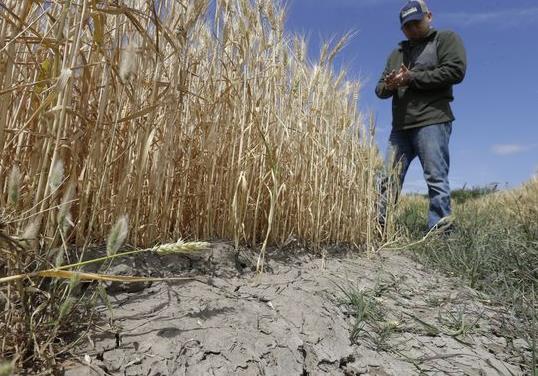 On Four Continents, Historic Drought Wreaks Havoc
On Four Continents, Historic Drought Wreaks Havoc.
USA TODAY reports; here's the intro: "
California's
historic drought appears to be matched by severe dry spells on three
other continents. Brazil, North Korea and South Africa are bearing the
brunt of much lower-than-average precipitation, wreaking havoc on
millions of peoples' lives and livelihoods. While the causes vary from
country to country, the chance of more intense droughts in the future as
a result of man-made climate change is only increasing as regional
extremes of precipitation — both more and less — remain likely,
according to the U.N.'s Intergovernmental Panel on Climate Change..."
Photo credit above: "
Gino
Celli, who relies on senior water rights to water his crops, inspects a
wheat field nearing harvest on his farm near Stockton, Calif., on May
18, 2015."
(Photo: Rich Pedroncelli, AP).
Exposing The Front Groups Attacking Renewables.
Hmmm. Let me think about this - which industry has the most to lose if
we start receiving the bulk of our energy from (free) natural,
non-polluting sources? It's a tough one. Here's an excerpt from dailykos.com: "Polling this year suggests that 74% of Americans
want their state to require a certain amount of renewables like wind
and solar as part of their electricity grid. And yet many states are
entertaining the idea of rolling back or repealing their renewable
energy standards. What would possess state legislators to do something
so unpopular? DeSmog's Steve Horn covers a new report
by the Energy and Policy Institute that pulls back the curtain on
various efforts around the US to repeal or weaken renewable energy
policies..."
Earth Will Only Have 12 Hours To Prepare For Massive Solar Storm. Yahoo News UK has this uplifting story - puts the tornadoes and flash floods into perspective. Here's a clip: "Trains
will be disrupted, power will go out, satellite signals will go wonky -
that’s what we have to look forward to when the sun next has a melt
down, and we’re unlikely to get more than 12 hours warning. In a new
government document, the Department of Business, Innovation and Skills
has laid out its Space Weather Preparedness Strategy, outlining the
risks of unsettled space weather as well as what it plans to do about
them..."
How To Stay Safe When The Big One Comes.
Here's a follow-up to the recent (terrifying) piece in the New Yorker
focused on the probability of a monster 9.0+ earthquake impacting the
Pacific Northwest. This (new) New Yorker article
puts the threat into better focus and context and provides advice on
steps residents can take to lower their risk; here's an excerpt: "...So
a better analogy than toast is this: the Cascadia earthquake is going
to hit the Pacific Northwest like a rock hitting safety glass,
shattering the region into thousands of tiny areas, each isolated from
one another and all extremely difficult to reach. That’s why Murphy’s
plan involves, in his words, “leasing, buying, or stealing any
helicopter I can get my hands on.” Helicopters can’t do everything, but
they can, at least, get almost anywhere. (FEMA
has also made arrangements with the U.S. Navy Third Fleet to conduct a
massive sea-lift operation for those stranded on the coast—but, for
logistical reasons, it will take the fleet seven days from the time of
the quake to arrive.)..."
Elon Musk And Stephen Hawking Among Hundreds to Urge Ban on Military Robots. Here's the intro to a
New York Times story: "
Elon Musk and Stephen Hawking,
along with hundreds of artificial intelligence researchers and experts,
are calling for a worldwide ban on so-called autonomous weapons,
warning that they could set off a revolution in weaponry comparable to
gunpowder and nuclear arms. In a letter
unveiled as researchers gathered at the International Joint Conference
on Artificial Intelligence in Buenos Aires on Monday, the signatories
argued that the deployment of robots capable of killing while untethered
to human operators is “feasible within years, not decades...”
Divers Find Giant Floating Blob - Have No Idea What It Is. Here's a snippet of a curious piece at
Huffington Post: "...
As
Tanriover’s mesmerizing video went viral earlier this month, the
Internet leapt at the chance to solve the mystery. Christopher Mah of The Echinoblog ended
up being the first to the plate. Mah said in a tweet that Dr. Michael
Vecchione, a squid expert and scientist at the Smithsonian Museum of
Natural History, had come up with a possible answer. The blob, Vecchione
said, was likely an enormous squid egg mass -- the “largest” he’s ever seen..."
Kentucy Man Shoots Down Drone Hovering Over His Backyard. Do you own the airspace above your home? Lawyers will have a field day with this one; here's the intro to a story at
Ars Technica: "
The
way William Merideth sees it, it’s pretty clear-cut: a drone flying
over his backyard was a well-defined invasion of privacy, analogous to a
physical trespassing. Not knowing who owned it, the Kentucky man took
out his shotgun and fired three blasts of Number 8 birdshot to take the
drone out. "It was just right there," he told Ars. "It was hovering, I
would never have shot it if it was flying. When he came down with a
video camera right over my back deck, that's not going to work..." (Photo: William H. Merideth).
Moss-Viewing Trips Catching On Among Women.
Personally I prefer watching paint dry but I should give this a chance.
We can only hope this catches on here - beats hanging out at the mall.
Here's an excerpt from
Japan Times: "
One
day in June, a group of 17 people, mostly women wearing colorful
outfits, got together at a scenic lakeside area at the foot of Mount
Kita-Yatsugatake in Nagano Prefecture. Instead of using binoculars to
look at the panorama around them, these people were gazing downward with
the aid of a loupe, sometimes crawling around on their hands and knees.
They were captivated by the colonies of moss growing in the area, known
as a “green carpet...”
Photo credit above: "
During
an observation workshop held in June, participants observe moss growing
beside a trail in the Kita-Yatsugatake mountain range in Nagano
Prefecture." | KYODO.
Buffalo Snow Pile Refuses to Melt Eight Months After Snowstorm.
I'm feeling even better about living in Minnesota, where our snow piles
melted back in April, as I recall. Here's an excerpt from
Yahoo News: "
The
sun is shining, swimming pools are open and there’s still a giant snow
pile in New York. The calendar says it’s almost August, but an estimated
12-feet-tall snow pile still lingers in Buffalo, New York from a snow
storm eight months ago. “The original problem started back in November,”
New York state climatologist Mark Wysocki told ABC News today. “The
city had no place to put the snow, so they found a vacant lot and
starting bringing in dump trucks full of snow..."
Image credit above: "
Buffalo Snow Pile Refuses to Melt Eight Months After Snowstorm." (ABC News)
TODAY: Spectacularly sunny with a refreshing breeze. Dew point: 56. Winds: NW 15+ High: 85
THURSDAY NIGHT: Clear, still very comfortable. Low: 63
FRIDAY: Sunny, low humidity. Very nice. High: 83
SATURDAY: Partly sunny, mostly-dry. W 10. Wake-up: 65. High: 84
SUNDAY: Hazy sun, few T-storms late. Wake-up: 67. High: 85
MONDAY: Plenty of sun, cooler & less humid. Wake-up: 63. High: 80
TUESDAY: Blue sky, light winds. Wake-up: 65. High: 82
WEDNESDAY: Few showers and T-storms. Wake-up: 63. High: near 80
Climate Stories....
Defense Department to Congress: Global Warming is a "Present Security Threat". My
youngest son flies helicopters for the Navy - I can tell you for the
fact that the U.S. Navy is taking climate change, climate volatility and
rising seas very seriously. Andrew Freedman at
Mashable has the story - here are a few snippets that got my full undivided attention: "
For
the first time, the U.S. Department of Defense has detailed what it
views as its greatest challenges related to climate change. In a report
to Congress, the Defense Department said that global warming poses a
"present security threat, not strictly a long-term risk." The report,
delivered to the Senate Appropriations Committee on Tuesday and publicly released Wednesday,
further stated the Defense Department is "already observing the impacts
of climate change in shocks and stressors to vulnerable nations and
communities," including in the United States, the Arctic, Middle East,
Africa, Asia and South America.....
Studies published in June
found that humanity is rapidly depleting a third of the world's largest
groundwater aquifers, with the top three most stressed groundwater
basins in the political hotspots of the Middle East, the border region
between India and Pakistan, and the Murzuk-Djado Basin in northern
Africa..."
Photo credit above: "
Thick smoke and
flames from an airstrike by the U.S.-led coalition rise in Kobani,
Syria, as seen from a hilltop on the outskirts of Suruc, at the
Turkey-Syria border, Monday, Oct. 20, 2014." Image: Lefteris Pitarakis/Associated Press.
The full report from the Defense Department is at
defense.gov. See also:
Global warming helped trigger Syria's civil war.
Climate Change Will Cause Increased Flooding in Coastal Cities. Here's an excerpt from Forbes: "...
Another paper, published yesterday in Nature, had less fanfare than the Hansen paper, but shows the severe danger of flooding in coastal regions,
particularly in the United States. This risk isn’t directly from
sea-level rise, but from the intensification of storm surges and
increased precipitation that are secondary effects of climate change.
Flooding risk in any particular place depends on a number of factors:
the flatness of land right by the water, how steep the continental shelf
is off the coast, the number and severity of storms, etc. That’s why
much of the state of Florida is at greater risk than coastal cities in
California. As the Nature paper shows, heavier rainfall combines with
storm surges, the rush of water toward the shore during major storms, to
amplify flooding..."
Image credit above: "
Florida
as seen from the Space Shuttle in 1998. Flooding from climate change is
threatening much of the coastline, including major cities in Florida." (Credit: NASA)
Get Ready for Ugly As Markets Begin To Deal With Climate Crisis. Here's an excerpt of a story at
EcoWatch that made me do a double-take: "
Advocates of “market-based” climate
solutions paint pastel pictures reflecting smoothly adjusting
macro-economic models. Competitive markets gradually nudged by carbon
pricing glide into a low carbon future in a modestly disruptive fashion,
much as sulfur pollution from power plants was scaled back in the
1990’s. But commodity markets for oil and gas don’t work that way. These
real markets are poised to savagely strand assets, upset expectations,
overturn long established livelihoods and leave a trail of wreckage
behind them—unless climate advocates start owning the fruits of their
own success and preparing for the transition. Schumpeter’s destructive
engine of capitalism is about to show its ugly side..." (File photo: Shutterstock).
Washington D.C. Sinking Fast - Adding To Threat of Sea-Level Rise. Here's an excerpt from
phys.org: "
New
research confirms that the land under the Chesapeake Bay is sinking
rapidly and projects that Washington D.C. could drop by six or more
inches in the next century - adding to the problems of sea-level rise.
This falling land will exacerbate the flooding that the nation's capital
faces from rising ocean waters due to a warming climate and melting ice
sheets - accelerating the threat to the region's monuments, roads,
wildlife refuges and military installations. For sixty years, tide
gauges have shown that sea level in the Chesapeake is rising at twice
the global average rate and faster than elsewhere on the East Coast..."
* The paper from geosociety.org is
here.
Wall Street Heavy Hitters Warn About Climate Change. Moving to Florida? Rent, don't buy, especially if you're considering coastal property. Here's an excerpt of a story at
Florida Today: "
A
group of billionaires and former statesmen issued a dire warning
Tuesday about the economic and health risks posed by global warming.
Climate change could put up to $23 billion in Florida property
underwater by 2050 and cause several thousands more residents to die
annually from heat stroke, according to a report backed by former Wall
Street titans and former New York City Mayor Mike Bloomberg. Their
proposed fix: put a price on carbon..."
Op-Ed: Carbon Pollution A Threat To National Security. Here's a snippet of an editorial at
The York Dispatch that caught my attention: "...
One
thing is certain, the fossil fuels industry in the U.S. is allowed to
extract massive amounts of fossil fuels and release the carbon pollution
contained within at no cost to them. The planet (and society) will
continue to shoulder the economic, ecological and human costs of carbon
pollution. These costs will continue to grow and our security will
continue to deteriorate as our civilization, which has risen during a
time of climate stability, is forced to deal with an increasingly
unstable climate. Adding these costs to the price of fossil fuels will
send a signal to the market and spur investment in clean, carbon-free
sources of energy and reduce the risks to our national security." (File photo: AP).
Tick Populations Booming Due To Climate Change. The Guardian has the unpleasant details; here's a snippet of a recent article: "...
Clearly
ticks are expanding farther north,” she said. “[W]e’re finding a lot of
tick species moving into new areas. And a lot of that has to do
potentially with climate change [and] animal husbandry practices if
we’re cutting forests or recreating grasslands... So as a whole ticks
themselves are really becoming an emerging problem, not that they always
weren’t anyway, but they are getting worse.” Foley said the expansion
of their range has brought them into Canada, and she called some of them
“very, very aggressive human biters” that can potentially transmit
disease..."
Photo credit above: "
Ticks can spread infectious diseases such as Lyme disease and and Rocky Mountain spotted fever." Photograph: Rasmus Holmboe Dahl/Alamy.
2015 Arctic Melting Season Won't Break Records, But Could Wipe the "Recovery". Here's an excerpt from a
Guardian story authored by St. Thomas professor John Abraham: "...
If
this weather keeps up – and according to the current forecasts, it will
for at least another week – that thicker multi-year ice could receive
such a beating that the slight rebound from record low levels is
essentially wiped out by the time winter sets in again. On top of that,
it looks highly probable that both the Northwest Passage and the
Northern Sea Route open up again simultaneously, a previously rare, but
now frequent event. Last week a research paper was published
showing how Arctic sea ice volume had rebounded after the crash of
2012. It’s too early tell, but if this rebound does get wiped out, the
Arctic will remain poised for larger losses, as soon as conditions are
right for large-scale melting..."
Image credit above: "
Arctic sea ice age distribution map in spring 2012 vs 2015." Source: University of Colorado.
The Climate Question That Should Be Asked in the Upcoming Presidential Debates. Here's a clip from
Huffington Post: "...
First is the preferred question, followed by a few weasel-word alternatives.
Preferred climate question
Accepting
as a given the overwhelming scientific agreement that humans are
changing the climate of the planet, what policies or strategies, if any,
would you support to address this issue?
Weasel-word climate question #1
Do you understand that there is overwhelming scientific agreement that humans are changing the climate? If not, why not?..."
Rocky Mountain Resorts Race To Defend Businesses Against Climate Change. Here's an excerpt from a story at
The Los Angeles Times: "...
Perl,
who was hired two years ago as Aspen's climate action manager, is among
the leaders of a multilayered and often unified effort among resort
towns to try to slow and defend against climate change while adapting
economically to a world in which snow falls less predictably and summer
tourism becomes increasingly important. "From my perspective, we've got
20 years of good winters that are highly likely," said Matt Abbott,
environmental project manager for Park City, a ski resort about 30 miles
east of Salt Lake City. "Beyond that, where are we at?" Some mountain
resort towns are lobbying in Washington to discourage the mining of
coal, a key culprit in climate change, and to urge more wildfire
prevention..."
File photo above: "
This is a file
photograph near Keystone, Colo., on Wednesday, Oct. 1, 2008, that shows
the damage done to a pine tree by pine beetles behind an aspen tree in
fall foilage. Trees in old growth forests across the West are dying at a
small, but increasing rate that scientists conclude is probably caused
by longer and hotter summers from a changing climate." (AP Photo/David Zalubowski, file)
This
falling land will exacerbate the flooding that the nation's capital
faces from rising ocean waters due to a warming climate and melting ice
sheets—accelerating the threat to the region's monuments, roads,
wildlife refuges, and military installations.
For sixty years,
tide gauges have shown that sea level in the Chesapeake is rising at
twice the global average rate and faster than elsewhere on the East
Coast.
Read more at:
http://phys.org/news/2015-07-washington-dc-fast-adding-threat.html#jCp
Disastrous Sea Level Rise Is An Issue For Today's Public - Not Next Millenimum's. Dr. James Hansen has an Op-Ed at
Huffington Post regarding his new and controversial paper. Here's an excerpt: "...
Our
simulations were aimed to test my suspicion that ice sheet
disintegration is a very nonlinear phenomena and that the IPCC studies
were largely omitting what may be the most important forcing of the
ocean: the effect of cold freshwater from melting ice. Rather than use
an ice sheet model to estimate rates of freshwater release, we use
observations for the present ice melt rate and specify several
alternative rates of increase of ice melt. Our atmosphere-ocean model
shows that the freshwater spurs amplifying feedbacks that would
accelerate ice shelf and ice sheet mass loss, thus providing support for
our assumption of a nonlinear ice sheet response..."
James Hansen Spells Out Climate Danger Of The "Hyper-Anthropocene" Age. Here's more perspective on the new paper at
ThinkProgress: "
Hansen and co-authors deftly dismiss those ill-informed Pollyannas who use Orwellian terms like “good Anthropocene.”
They explain that we are far past “the era in which humans have
contributed to global climate change,” which probably began a thousand
years ago, and are now in “a fundamentally different phase, a
Hyper-Anthropocene … initiated by explosive 20th century growth of
fossil fuel use.” The “Hyper-Anthropocene” is a very good term to
describe the unprecedented acceleration in global warming that humanity
has set in motion with the explosive growth of fossil fuels and carbon
pollution, as the recent science makes clear.."
Graphic credit above: "
Temperature change over past 11,300 years (in blue, via Science, 2013) plus projected warming this century on humanity’s current emissions path (in red, via recent literature)."
Atlantis Awaits: Melting Ice and Rising Water for Coastal Cities.
Alarmist hype? I sure hope so, but so far Dr. Hansen's predictions have
been pretty much on target. Here's an excerpt of an Op-Ed at
The Baltimore Sun: "...
But
despite their many blessings, the Earth's oceans are becoming a curse.
By burning fossil fuel, we have already begun to unleash the vast
quantities of water locked up in glaciers as ice. That melt has already
begun raising sea levels, which are, as revealed by our most recent research,
preparing for an invasion of our coastal communities the likes of which
modern humans have never encountered. To say that we're not ready for
this oceanic assault would be an understatement. Our international goal
for limiting warming won't be enough to hold the waters back. Even if we
meet the target goal of limiting global warming to 2 degrees Celsius,
we will have already released enough CO2 to drive a dangerous amount of
melting. Without concerted efforts to tackle climate change, we are
condemning our biggest, most prosperous and populated cities to an
underwater existence..."
Alaska's Terrifying Wildfire Season And What It Says About Climate Change. Here's a snippet from a Chris Mooney story at
The Washington Post: "...
The
staggering 2015 Alaska wildfire season may soon be the state’s worst
ever, with almost 5 million acres already burned — an area larger than
Connecticut. The pace of the burn has moderated in the last week, but
scientists say the fires are just the latest indicator of a climatic
transformation that is remaking this state — its forests, its coasts,
its glaciers, and perhaps most of all, the frozen ground beneath — more
than any other in America..."
Photo credit above: Washington Post photo by Marc Lester.
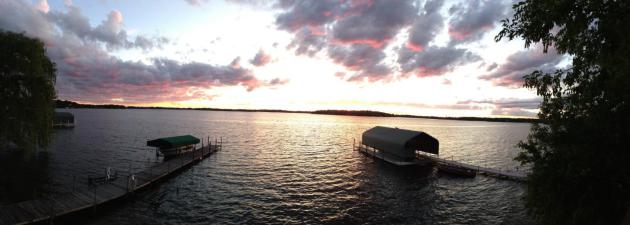




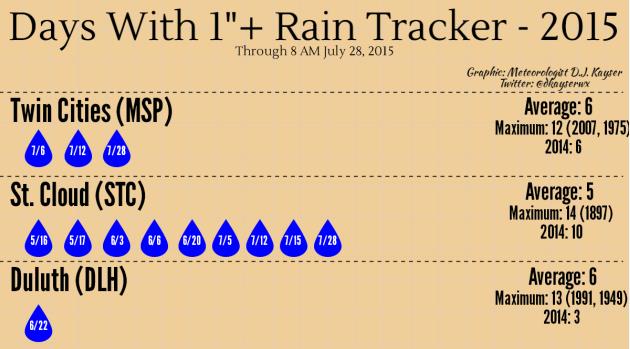
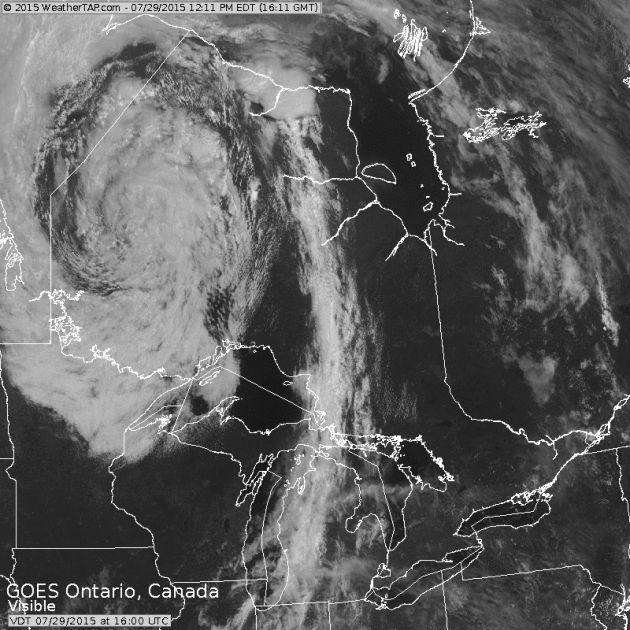


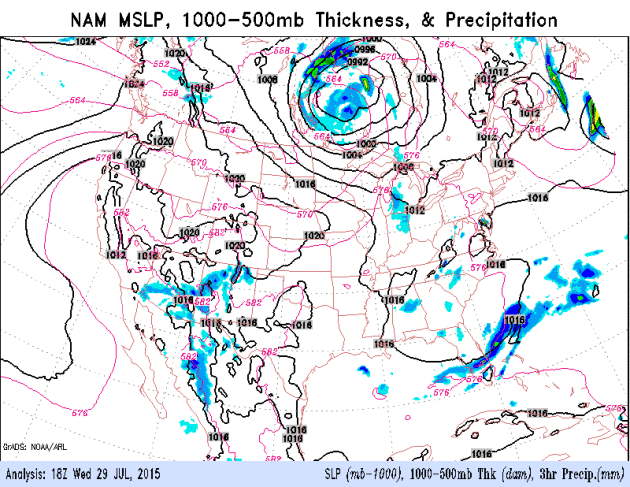
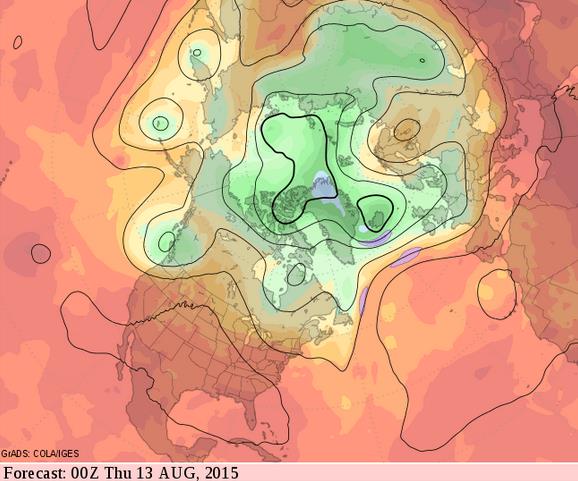



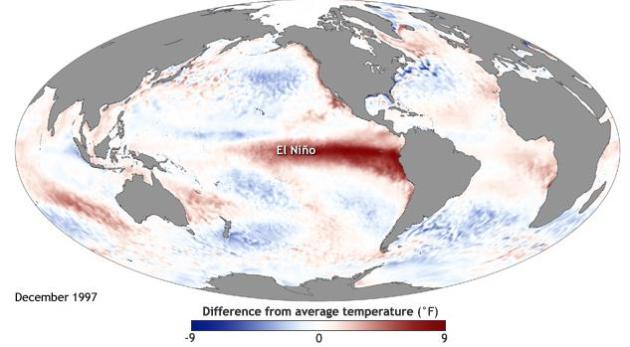

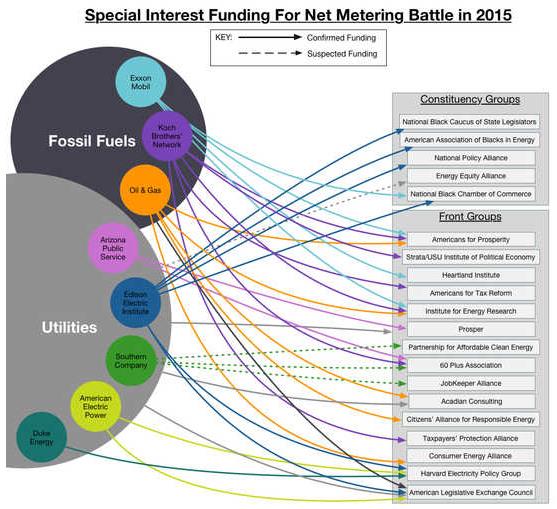

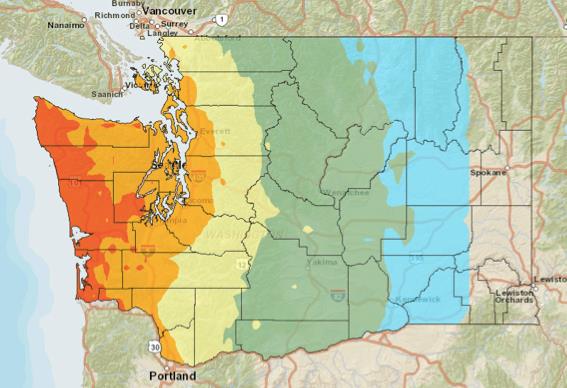


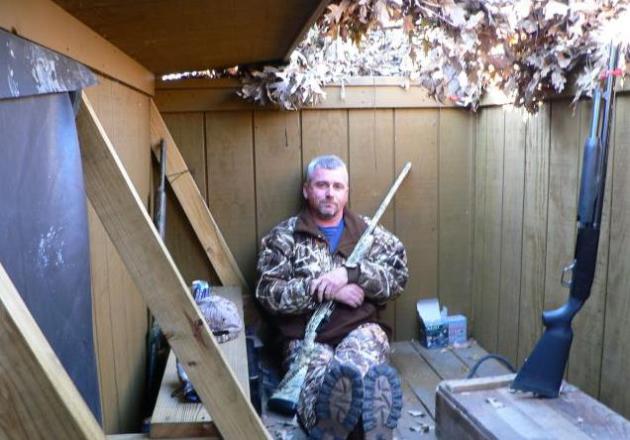

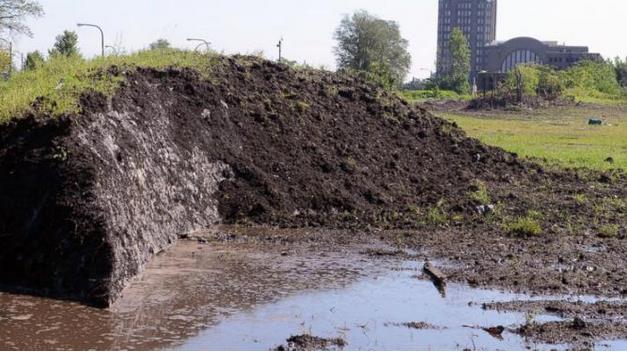

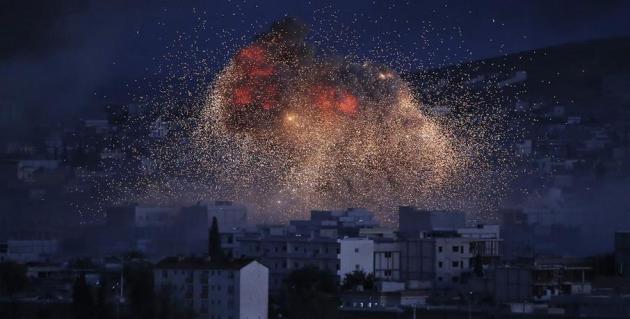
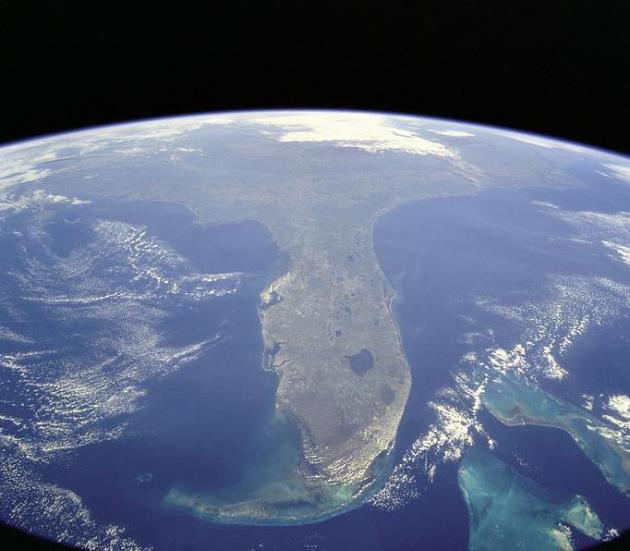


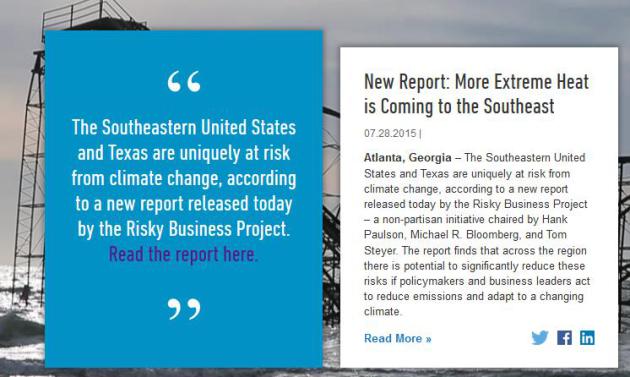



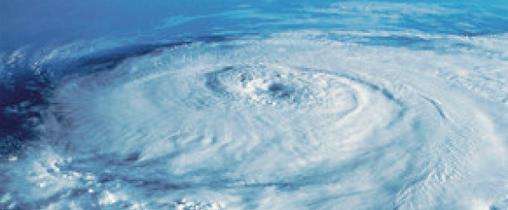

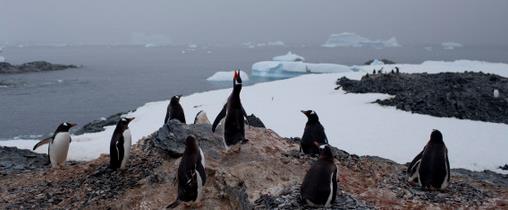


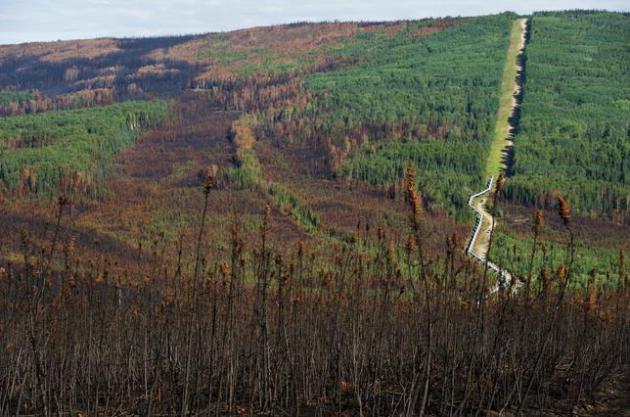
No comments:
Post a Comment